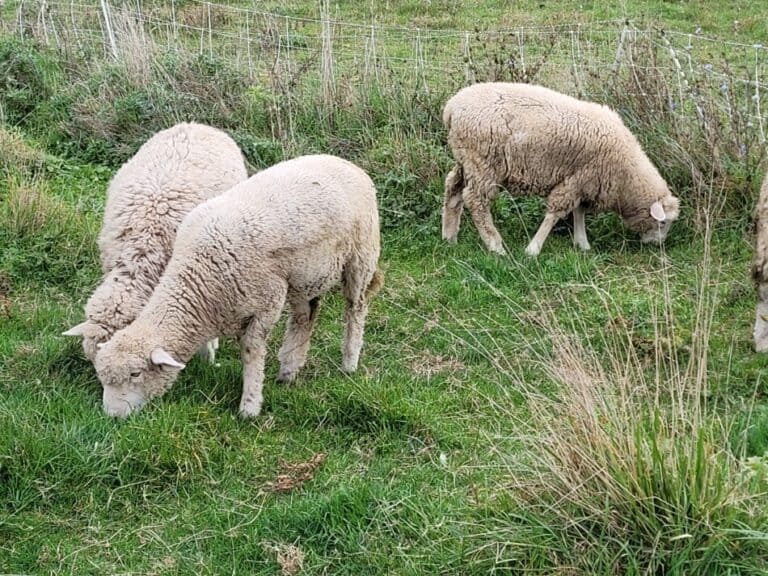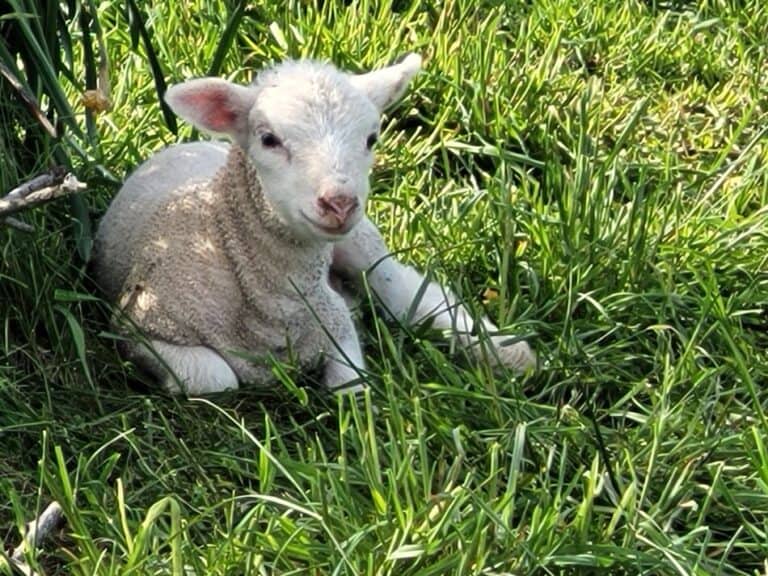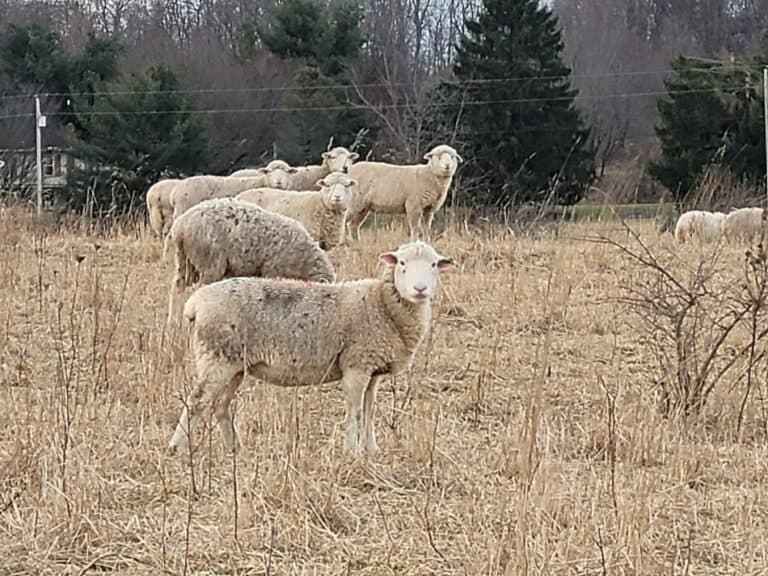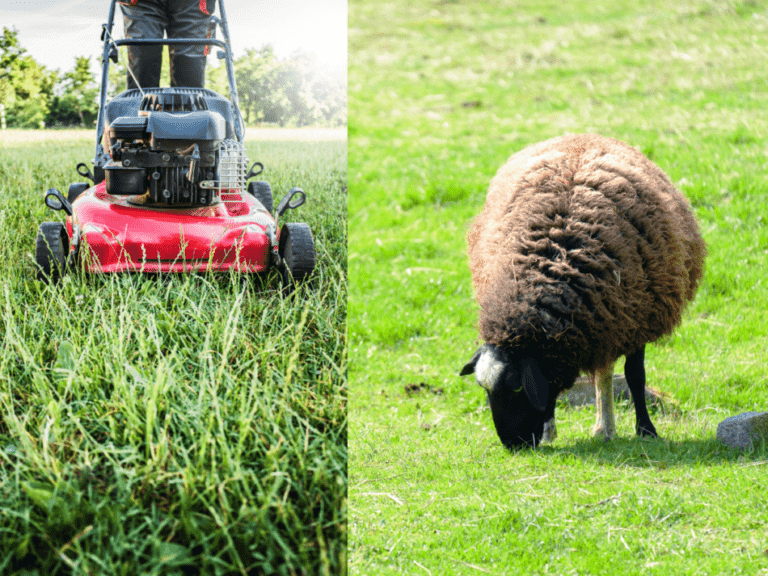What Sheep Can Breed Year Round?
Getting fall lambs, having flexibility in the breeding calendar, splitting the flock to lamb at multiple times in the year all require an extended, if not year round breeding season, which most sheep do not have.
If you want sheep that can breed year round, you have a few breeds to choose from, including both wool and hair sheep, that should give your flock the ability to breed year round.
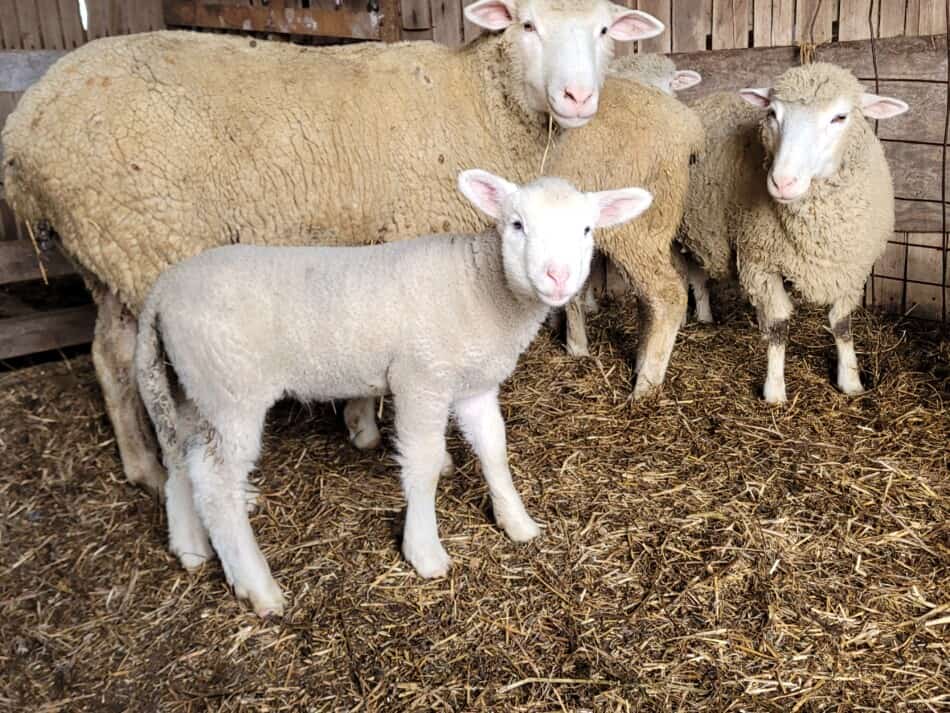
| Hair sheep with extended breeding seasons | Wool Sheep with extended breeding seasons |
| Barbados Blackbelly | Dorset |
| Dorper | Finn |
| Katahdin | Polypay |
| St. Croix | Rambouillet |
| Romanov |
Some sheep can breed year round
The sheep that can breed year round are Barbados Blackbelly, Dorper, Katahdin and St. Croix for the hair sheep options, and Dorset, Finn, Polypay, Rambouillet and Romanov are the wool sheep options.
From what I have seen, most folks looking into year round breeding are interested in out of season roaster or market lambs, so the breeds used are chosen to produce a meatier lamb.
This means ewes that produce lambs with higher carcass value are going to be preferred over a thinly built ewe, to put more meat on the lamb, even if that thinly built ewe breeds out of season.
With this in mind, consider puttting Dorper, Dorset and Polypay at the top of the list here since you get a chunkier lamb along with a higher likelihood of good lambing percentages.
We have a Dorset and Polypay based commercial flock that we lamb in May. We normally have a small group of out of season lambs each year, as well.
This year it was mainly some yearlings that did not breed to lamb at a year, but bred in the spring when we turned them out with the main group (that still had rams) to lamb at more around 18 months.
Best Sheep Breeds For Meat is my article that gives some good options that are meat focused and some, but not all, will fit into the year round lambing group.
What is the normal breeding season for sheep?
Most sheep are seasonal breeders, this means they are most likely to breed in the fall for lambs in the spring.
The breeding season is determined by daylength and most sheep breeds are the most fertile in September, October and November, which puts lambing 5 months later in February, March and April.
The normal breeding season matters to out of season lambing operations
The reason you need to know this is that your sheep, even the ones with an extended or year round breeding season, will also be most fertile in these months. All sheep naturally breed well in the fall.
You’ll need to keep track of the ewes that breed in the months that are the most difficult for you to get ewes bred in and continue to select for sheep that breed well in the spring (the most difficult months).
Can Keep Rams With Ewes Year Round? is my article that goes over normal breeding seasons for folks who do not want to have cold weather lambs.
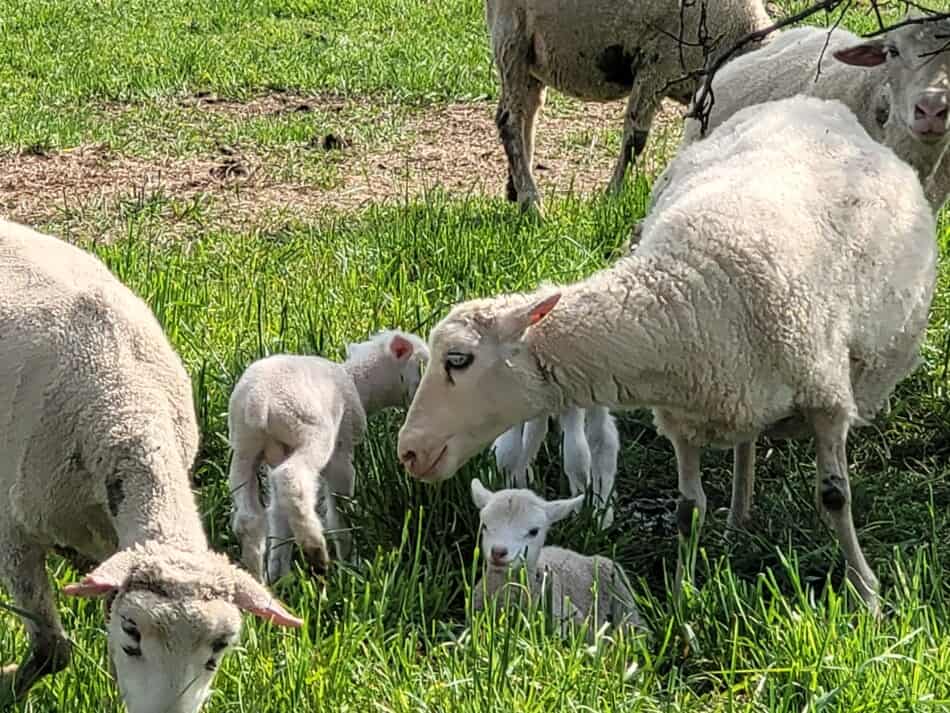
Should you breed sheep out of season?
Breeding sheep out of season takes more management and facilities than sheep that are bred to lamb in the more traditional times for your area.
Are you willing to put in the time, money and effort to make this happen? Do you have the facilities to handle lambs all year, lambing all year and the feed to support this high production?
I’m not trying to talk you out of lambing year round, I’m just pointing out that the reasons why sheep tend to lamb in the spring are that the situation for the area suits the sheep.
When you go off of the normal for your area, you’ll have to make up for all the things that were fairly easy but now are not.
A big concern is cost, now you’ll need the best feed of the year at the time when it is least likely to be available. Can you get what your flock needs?
The other big concern that I would have, since I am from a colder part of the country, is that in the winter it is just as cold in the barn as it is out of the barn. All the barn does is stop the wind or snow.
On some mornings in mid winter, lambs would die from cold in the barn, as well. What is your plan to handle that situation?
You could go with heat lamps and lambing jugs or all nighters in the barn watching for lambs to be born. Or you could insulate the barn, but that comes with it’s own set of problems, mainly lack of fresh air.
Maybe you are thinking, “I do all of this work with my sheep anyway, so what is the difference here?”
If this sounds like normal lambing season for you, then you’re right, out of season lambing probably won’t be all that different from what you are used to.
If, however, this sounds like a ton of extra work compared to what you normally do for lambing season, then lambing year round probably is not for you.
Start penciling all of this out and see if the costs, in both time and money, are worth it to you. Dig deep here, you want to know what you are getting into.
Breeding for Out-of-season Lambs to Fill in the Industry Gaps is an Ohio State Sheep Team article with a great overview and links to a presentation specifically on this topic.
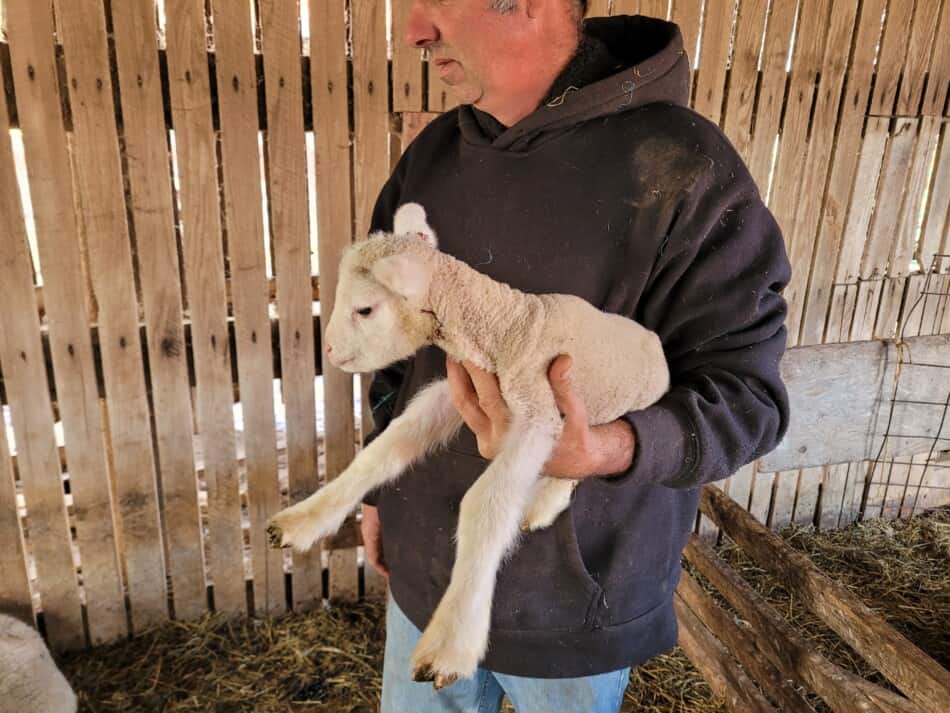
Out of season lambing requires more management
As I have mentioned above, out of season lambing requires more management from you.
You must be on your game with scheduling, having different groups of sheep getting what they need, when they need it and be able to cash flow this whole fiesta.
Some groups of your ewes will end up lambing in season because part of year round lambing includes the “normal” part. This group should be fairly easy to work with.
Any group of ewes that lambs in an off season for your area is going to require more from you. This includes your time as well as your money.
Off season lamb production will cost you more, since you need to keep great feed to ewes at a time when great feed is harder to find.
You will also want to have some sort of creep feeding set up for the lambs, to get them off and growing so that there are no laggers to mess up the timing for the next group of sheep that come in.
A look at a year round lambing farm I visited
The farm I went to with out of season lambing had a system where the ewes had lambs inside and the lambs stayed inside until they were old enough to be weaned then sold.
As far as the non lactating ewes go, the bred ewes were kept outside on a pasture surrounding the barn. He also had an on demand milk feeder set up for the orphan lamb pen.
The ewes with lambs ate a TMR (total mixed ration) which means that the hay and grain went through a grinder/mixer so that all of the feed for the day was in smaller pieces and mixed together.
This is the type of mixer that you see slowly driving by a bunk feeder while putting out a long pile of feed out for dairy cattle.
The tractor and mixer were driven down the middle of the barn to spread out the ration on the cement floor and the sheep would reach through to the aisle way and eat.
These lambs were being fed to gain quickly in order to be sold at 60 pounds or so to another sheep operation that would feed them out to market weight.
This was a slick operation that was in a new, purpose built barn and was run by one man, who also had a full time job. If I remember correctly, he had three groups of ewes lambing per year.
Resources:
Off Season And Accelerated Lamb Production by Penn State Extension, list of breeds recommended for out of season lamb production
For specific data on out of season breeding of hair sheep:
Accelerated Lambing And Out Of Season Breeding In Hair Sheep by Maryland Small Ruminant Page shows hair sheep conception rates are influenced by rainfall and forage availability rather than daylength.

